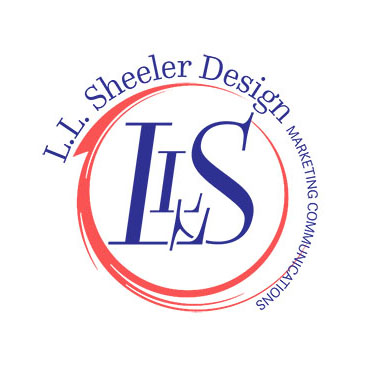The definition for graphic design is “The art, or skill, of combining text and pictures in magazines, advertisements or books”. This definition merely scratches the surface of what graphic design is and what a graphic designer does, as well as the importance of it to modern society.
Introduction to graphic design: A short history
Graphic design is also known as marketing communication, commercial design or visual communication, and it has been a part of our life for centuries.
In 1922 William Addison Dwiggins coined the term “graphic design”. Back in the 1700s, these techniques were mostly used in newspaper ads, but in a fairly fundamental fashion. Over both the 18th and 19th centuries, the techniques were then developed in trading cards, classified ads and public notices.
Graphic design as we know it today, was born in the early 20th century. For example, the signage for the London Underground is considered to be a modern era’s masterpiece.
It actually used a typeface which was specifically developed for the project and it is still used today. The design industry exploded over the next 80-90 years, and a graphic design career is a pretty good option for a lot of people.
When trying to define graphic design, “New Typography”, Jan Tshichold’s book, was incredibly influential. Germany’s Bauhaus school of design took things to the next level and set a very strong foundation for today’s designers. Graphic designers such as Milton Glaser, Abram Games, Neville Brody and others took things to another level.
It’s important to note when talking about graphic design that it has a crucial role in pop culture, commerce and plenty of other aspects of modern society.
Applications of graphic design
Graphic design is everywhere. From the logos on your office supplies and mugs, to the wrappers on the candy bars.
You will see hundreds of examples of graphic design each day, and most of the time, you aren’t really even realizing the impact it has on you. It serves a lot of functions, and it wears many hats.
Here are just a few of the uses of it:
- Corporate identity and branding
- Signage
- Printed materials
- Packaging
- Album covers
- Online
- Film and TV graphics and titles
- Greeting cards
- T-shirt, and other clothing designs
This is just a small fraction of the possible uses. In some situations, such as signage designs, it should provide a clear and easy way of conveying information.
However, in other situations, it can go in the exact opposite direction, and be jarring, hard to read. This is often seen in album covers, posters, as well as other forms of disruptive design. And, in this modern world, graphic design and web design often go hand in hand.
A magazine, or grocery store, or any other kind of business must also have an online presence, and the designers must maintain a look and feel that is consistent across multiple disciplines, where the digital design often dictates how the rest of it is executed.
But, regardless of its use, without graphic design, the modern society would basically fail to function. And, it isn’t just to make things look pretty, but it is a pretty crucial part of commerce, as well as life.
So, what is graphic design?
Graphic design is what will communicate your brand and message through an impressive logo, or enchanting brochure and stunning posters. Often confused with illustration, a designer will combine illustrations, photographs and type to communicate a certain idea.
Considering the difference between a furniture maker and an interior designer is one way to understand this, where one makes a specific object for a specific purpose, and the other will think about how to make use of it and create an environment.
A professional designer is much more than a creative mind with an artistic inclination. For graphic design, both keen observation skills, as well as analytical thinking, are essential. A designer will use a variety of methods to combine their knowledge of art and technology and communicate a specific message by creating an impressive visual.
Many designers will produce a system that should be experienced over time, but isn’t confined to making objects. Wayfinding refers to signage and branding which are applied on buildings or outdoor areas, and while each sign is a work of design, they form a larger system together, one that lets people navigate, yet maintain a sense of where they are.
The system’s design, and the relationship among all those parts, this is where the designer will bring the greatest value.
Environmental graphics is a larger category that includes designs that connect a person to a place, overlapping with dynamic displays, imagery and creative placemaking.
For example, a wall of terminals that show flights, or a digital display on a building’s façade that shows stock prices, they’re all examples of environmental graphics.
Just like wayfinding, branding pulls together the artifacts of a brand, such as a sign, logo or business card, into a visual system. The design work is how they’re experienced over time, and no part is made without considering the other parts, or without thinking about the customer’s first encounter with the brand. In the 20th century, a consumer commonly had just a couple of touchpoints for a brand.
Ending thoughts on this article about the graphic design definition
To wrap things up, a graphic designer is a person that makes use of visual elements in order to communicate a message through print, as well as electronic media.
They’ll develop a design for anyone from a magazine or newspaper, to websites, video games, packaging and marketing materials.
Full disclosure: I got this off the internet but don’t know who wrote it or where I got it so I cannot credit them properly.
